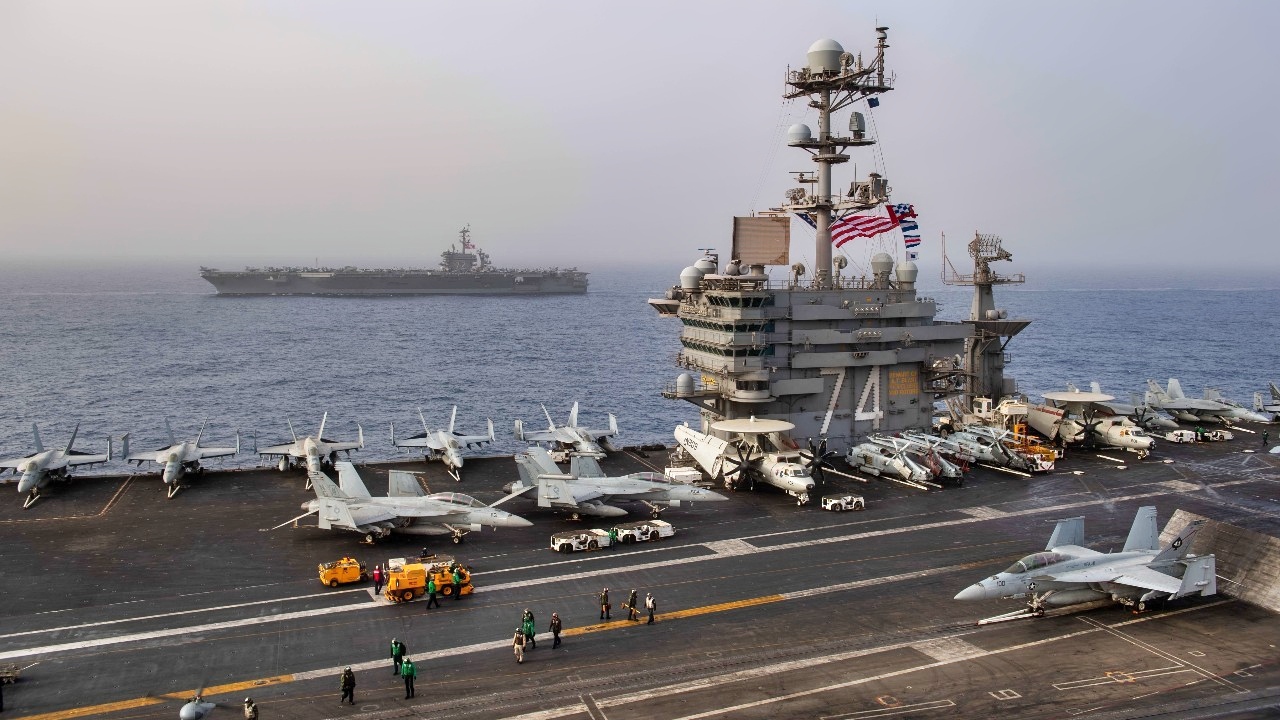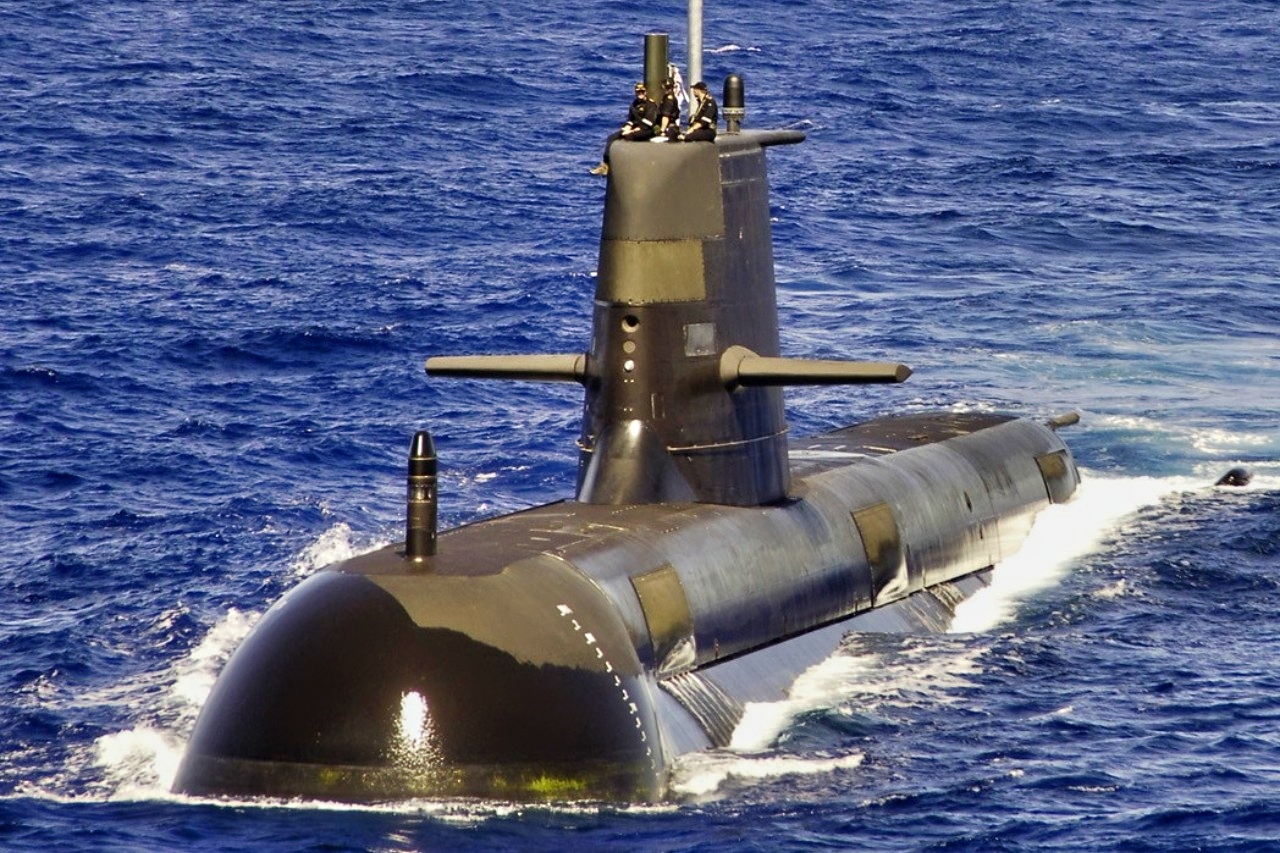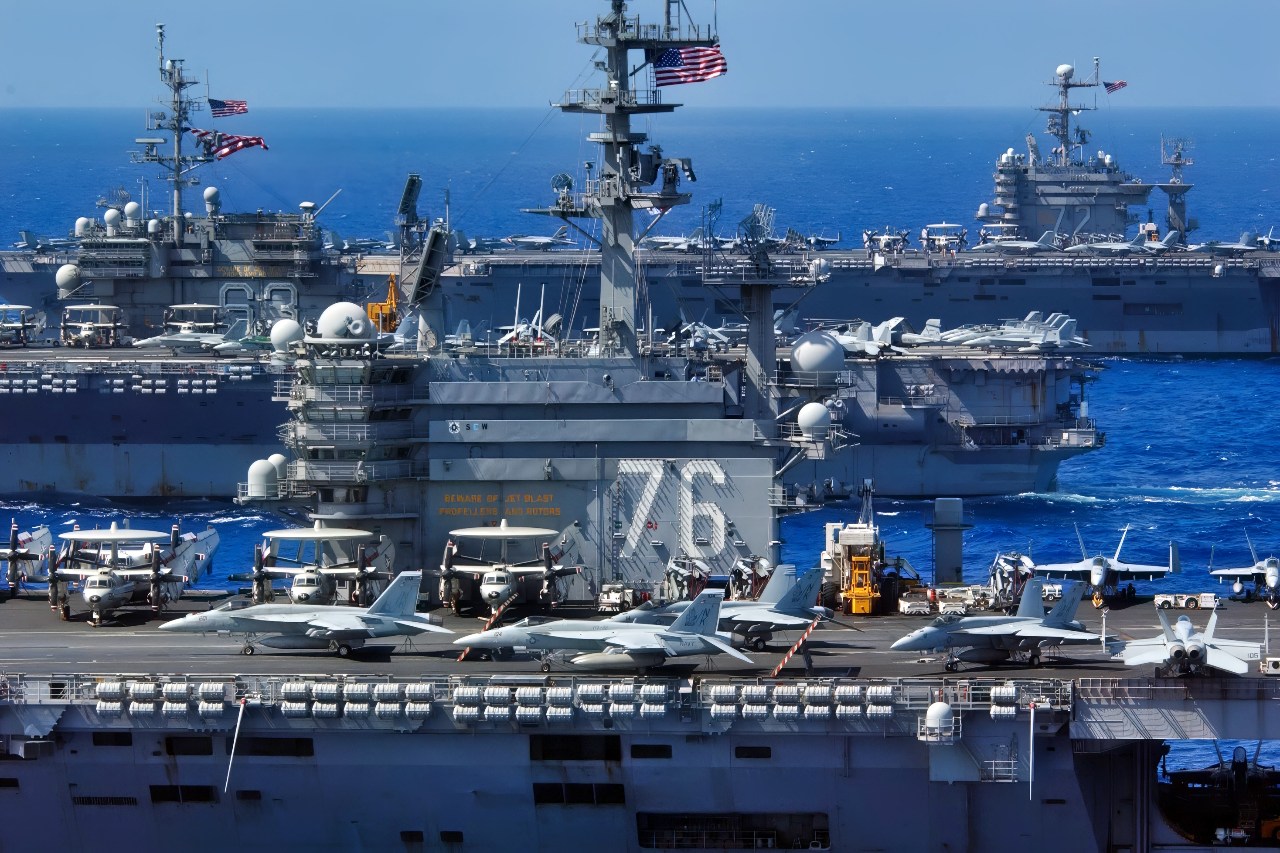Key Points and Summary – Australia’s Collins-class submarines, once plagued by design flaws, were upgraded into formidable diesel-electric boats.
-In famous early 2000s wargames, they repeatedly “sank” U.S. Navy warships, including an aircraft carrier, proving their lethality.

SSN-AUKUS. Image Credit: Creative Commons.
-Despite this success, Australia is now transitioning to nuclear power via the AUKUS pact, a move that controversially scrapped a multi-billion dollar deal with France.
-The respected Collins class will undergo a life-extension program and remain in service until the new nuclear-powered submarines arrive in the late 2030s, bridging a critical capability gap.
Collins-Class: The Australian Submarine That ‘Sank’ a U.S. Aircraft Carrier
The Royal Australian Navy’s Collins-class of diesel-electric submarines entered Australian service in the late 1990s.
It replaced the Oberon-class, which was less capable than its counterparts in the Royal Navy and U.S. Navy.
The new class was controversial from the start. It made a high amount of noise while underway, suffered mechanical issues, and was plagued by operational problems.
As time went on, however, Canberra upgraded the submarines and improved its submariner training pipeline, giving the class of submarines credibility within the Australian military.
It also earned respect abroad thanks to its performance when the submarines participated in multinational exercises.
The Collins-class’ peak moment came in the early 2000s, during an exercise with the most capable navy in existence: the U.S. Navy.
Australia’s Collins-class submarines notched several simulated “kills” against U.S. Navy vessels during the course of several multinational exercises in the early 2000s—including simulated torpedo strikes against an aircraft carrier, as well as nuclear attack submarines.
One of the more noteworthy incidents involved the HMAS Waller.

The aircraft carrier USS Abraham Lincoln (CVN 72), back, steams alongside the aircraft carrier USS John C. Stennis (CVN 74) in the Mediterranean Sea, April 24, 2019. The John C. Stennis Carrier Strike Group (CSG) 3 and Abraham Lincoln Carrier Strike Group (CSG) 12 are conducting dual carrier operations, providing opportunity for two strike groups to work together alongside key allies and partners in the U.S. 6th Fleet area of operations. John C. Stennis is underway in the Mediterranean Sea as part of the John C. Stennis Carrier Strike Group (JCSCSG) deployment in support of maritime security cooperation efforts in the U.S. 6th Fleet area of responsibility. (U.S. Navy photo by Mass Communication Specialist 3rd Class Grant G. Grady)

(July 25, 2006)- The Australian Submarine HMAS Rankin (Hull 6) and the Los Angeles Class attack submarine USS Key West (SSN-722) prepare to join a multinational formation with other ships that participated in the Rim of the Pacific exercise. To commemorate the last day of RIMPAC, participating country’s naval vessels fell into ranks for a photo exercise. RIMPAC includes ships and personnel from the United States, Australia, Canada, Chile, Japan, Peru, the Republic of Korea, and the United Kingdom. RIMPAC trains U.S. allied forces to be interoperable and ready for a wide range of potential combined operations and missions. Abraham Lincoln Carrier Strike Group are currently underway on a scheduled Western Pacific deployment. U.S. Navy photo by Mass Communications Specialist Seaman James R. Evans (RELEASED)
The Collins-class submarine was participating in U.S.-led war games around Hawaii and in the waters to Australia’s north. Though the Waller initially integrated with a U.S. carrier battle group, the submarine also played an opposing enemy submarine.
While playing the adversarial role, the Waller reportedly penetrated the carrier group’s submarine screens and managed to make close-in observations of the aircraft carrier USS Abraham Lincoln (CVN-72).
Australian media lauded the submarine’s effort, though reporting at the time stressed that the feat was perhaps not representative of the submarine’s capabilities during a real conflict scenario.
“Neither achievement is a useful guide to performance unless you understand the full context,” a naval source told the Australian Financial Review.
“Photographing aircraft carriers is a submarine pastime,” a former officer added, explaining, “exercises are designed so that everybody goes home happy.”
But, at the very least, “under controlled exercise conditions,” the Australian submarine “evaded US, Japanese, Canadian, Chilean, Korean and British forces and provided photographic proof that it was well within torpedo firing range of a major and heavily defended U.S. prize.”
Out with the Old, in with the New
Fast forward to today, and the Royal Australian Navy is more than ready to ditch its Collins-class submarines.
In 2021, Australia turned heads when it revealed a trilateral defense partnership with the United Kingdom and the United States.
The agreement, known as AUKUS, was just the second time the United States has shared the crown jewel of its nuclear deterrence—the nuclear propulsion technology that powers America’s submarines.

PHILIPPINE SEA (Feb. 5, 2024) The Nimitz-class aircraft carrier USS Theodore Roosevelt (CVN 71) transits the Philippine Sea, Feb. 5, 2024. Theodore Roosevelt, flagship of Carrier Strike Group Nine, is underway conducting routine operations in the U.S. 7th Fleet area of operations. An integral part of U.S. Pacific Fleet, U.S. 7th Fleet operates naval forces in the Indo-Pacific and provides the realistic, relevant training necessary to execute the U.S. Navy’s role across the full spectrum of military operations – from combat operations to humanitarian assistance and disaster relief. U.S. 7th Fleet works together with our allies and partners to advance freedom of navigation, the rule of law, and other principles that underpin security for the Indo-Pacific region. (U.S. Navy photo by Mass Communication Specialist 2nd Class Andrew Benvie)
The Australian decision to join the grouping was also a significant snub to the French. In 2016, Canberra had forged a deal with France’s Naval Group for a 12-boat diesel-electric submarine fleet, a modified variant of France’s Barracuda-class submarines.
However, overtures by the United Kingdom and the United States proved too attractive to pass up. Once realized, the deal will offer Australia a superior submarine fleet with unlimited endurance.
The decision was met with consternation in Paris. French President Emmanuel Macron went so far as to accuse Australia of deception and betrayal, saying Canberra negotiated the deal in parallel to the deal with Naval Group, and in bad faith.
He added that the deal was tantamount to a “stab in the back.” If reporting is accurate, Naval Group learned that their deal with the Australians fell through just hours before the public announcement of AUKUS.
Postscript: Australia Can Indeed Sink Aircraft Carriers and the Future Is Coming
Australia justified the decision to scrap the deal with the French as strategically necessary and therefore justified.
AUKUS, meanwhile, is not quite the end of the line for the Collins-class. Before Australia can accept nuclear-powered submarines into service, Canberra needs to broaden its defense industrial base to sustain the subs.
Its sailors must also become familiar with nuclear submarine safety, technology, and operations.
In the meantime, the Collins-class will remain in service until the late 2030s thanks to a comprehensive life extension program.
They probably won’t score any hits, real or simulated, until then. Still, the submarines have had a pretty good voyage, all things considered.
About the Author: Caleb Larson
Caleb Larson is an American multiformat journalist based in Berlin, Germany. His work covers the intersection of conflict and society, focusing on American foreign policy and European security. He has reported from Germany, Russia, and the United States. Most recently, he covered the war in Ukraine, reporting extensively on the war’s shifting battle lines from Donbas and writing on the war’s civilian and humanitarian toll. Previously, he worked as a Defense Reporter for POLITICO Europe.
More Military
The First 48 Hours of a War With China ‘Could Be Ugly’
Russia Tried to Build Their Very Own F-22 Raptor. Calling It a Disaster Would Be a Gift
The Royal Navy’s Queen Elizabeth-Class Aircraft Carriers Simply Summed Up in 4 Words










